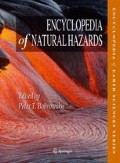Access this chapter
Tax calculation will be finalised at checkout
Purchases are for personal use only
Bibliography
Hagar, W. G., Crosby, B. A., and Stallsmith, B. W., 2000. Comparing and assessing acid rain-sensitive ponds. Journal of Hazardous Materials, 74, 125–131.
Keller, W., Yan, N. D., Gunn, J. M., and Heneberry, J., 2007. Recovery of acidified lakes: lessons from Sudbury, Ontario, Canada. Water, Air and Soil Pollution, 7, 317–322.
Mohanty, C. R., Adapala, S., and Meikap, B. C., 2009. Removal of hazardous gaseous pollutants from industrial flue gases by a novel multi-stage fluidized bed desulfurizer. Journal of Hazardous Materials, 165, 427–434.
Scanlon, J., 2001. Increasingly intolerable boundaries: future control of environmental pollution. Journal of Hazardous Materials, 86, 121–133.
Venkatesh, S., Gong, W., Kallaur, A., Makar, P. A., Moran, M. D., Pabla, B., Ro, C., Vet, R., Burrows, W. R., and Montpetit, R., 2000. Regional air quality modelling in Canada – applications for policy and real-time prediction. Natural Hazards, 21, 101–129.
Wang, W., Qin, Y., Song, D., and Wang, K., 2008. Column leaching of coal and its combustion residues, Shizuishan, China. International Journal of Coal Geology, 75, 81–87.
Author information
Authors and Affiliations
Corresponding author
Editor information
Editors and Affiliations
Rights and permissions
Copyright information
© 2013 Springer-Verlag Berlin Heidelberg
About this entry
Cite this entry
Thornbush, M.J. (2013). Acid Rain. In: Bobrowsky, P.T. (eds) Encyclopedia of Natural Hazards. Encyclopedia of Earth Sciences Series. Springer, Dordrecht. https://doi.org/10.1007/978-1-4020-4399-4_11
Download citation
DOI: https://doi.org/10.1007/978-1-4020-4399-4_11
Published:
Publisher Name: Springer, Dordrecht
Print ISBN: 978-90-481-8699-0
Online ISBN: 978-1-4020-4399-4
eBook Packages: Earth and Environmental ScienceReference Module Physical and Materials ScienceReference Module Earth and Environmental Sciences

